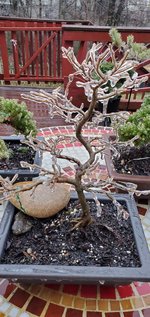penumbra
Imperial Masterpiece
You don't have to be a beginner to make mistakes. I have been in horticulture over 50 years and I make plenty of mistakes. That is why I share my personal experiences with you and others I think might be going down the wrong path. I didn't pay attention to what others were telling me when I killed a Chinese elm by bringing it inside. It was a very nice mame Chinese elm I killed only about 5 or 6 years ago. I should have known better. I will continue to offer my advice and my opinions, that is why I am on this thread. But I will not be hand holding as it removes me from my own path.U were a beginner once
I sincerely wish you the best and I sincerely wish the best for your elm.

